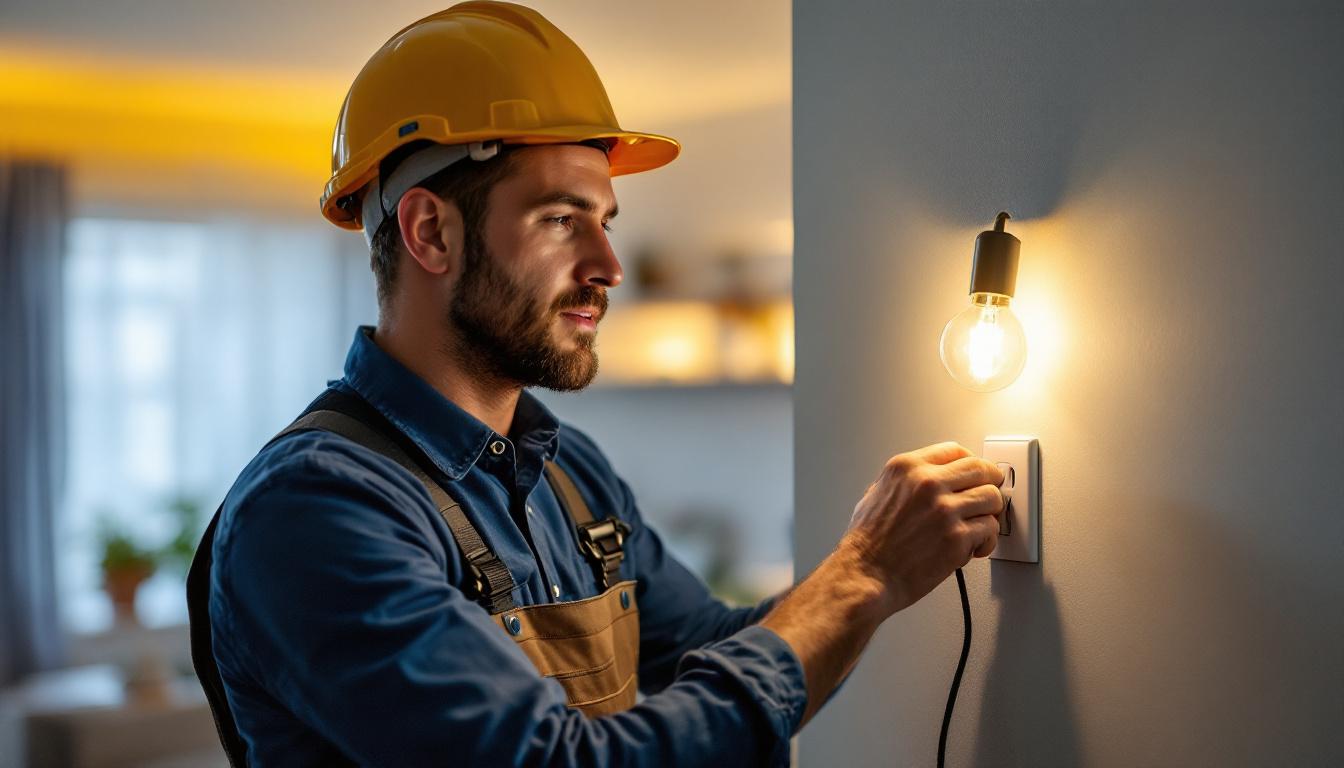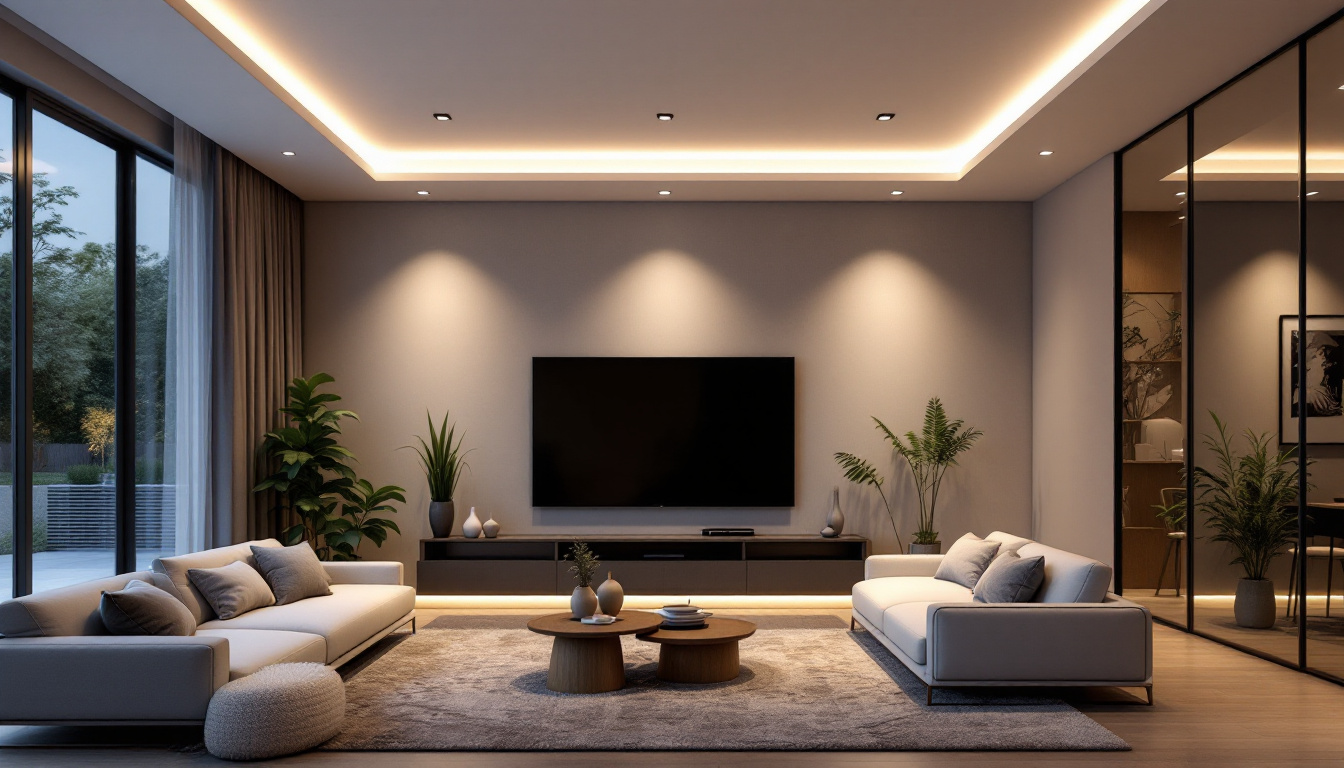
In the ever-evolving world of electrical installations, lighting contractors are continually seeking innovative solutions to enhance efficiency and functionality. One such solution that has gained traction in recent years is the switchable receptacle. This versatile device not only simplifies the control of lighting systems but also provides numerous benefits to both contractors and their clients. This article delves into the top strategies lighting contractors can employ when integrating switchable receptacles into their projects.
Before diving into strategies, it’s essential to grasp what switchable receptacles are and how they function. A switchable receptacle is an electrical outlet that can be controlled by a switch, allowing users to turn the power on or off remotely. This feature is particularly useful in commercial and residential settings, where lighting control can significantly impact energy efficiency and user convenience. The ability to manage power flow from a distance not only enhances user experience but also integrates seamlessly with modern smart home systems, making it a popular choice among tech-savvy homeowners.
Switchable receptacles offer several advantages that make them a valuable addition to lighting systems. Firstly, they provide enhanced control over lighting fixtures, enabling users to create customized lighting environments. This flexibility can be particularly beneficial in spaces that serve multiple purposes, such as conference rooms or event venues. For instance, a single room can be transformed from a bright, well-lit meeting area to a cozy, dimly lit space for presentations or social gatherings with just a flick of a switch, showcasing the versatility of these receptacles.
Secondly, they contribute to energy savings. By allowing users to switch off lights when not in use, switchable receptacles help reduce electricity consumption, which is an attractive feature for environmentally conscious clients and businesses looking to cut costs. Additionally, many switchable receptacles come with built-in timers or programmable features, allowing users to automate their lighting schedules. This not only ensures that lights are turned off when they are not needed but also provides added security by simulating occupancy in homes or businesses, deterring potential intruders.
Switchable receptacles can be utilized in a variety of settings, from residential homes to commercial buildings. In residential applications, they can be installed in living rooms, bedrooms, and home offices, providing homeowners with the ability to control lighting with ease. In commercial environments, they can be integrated into conference rooms, retail spaces, and even outdoor areas, enhancing the overall functionality of the space. For example, in retail settings, switchable receptacles can be used to spotlight specific merchandise, creating an inviting atmosphere that draws customers in while allowing store owners to easily adjust lighting based on the time of day or promotional events.
Moreover, the adaptability of switchable receptacles makes them suitable for both new constructions and retrofitting projects. This versatility is a key selling point for lighting contractors looking to expand their service offerings. In older buildings, where traditional wiring may pose challenges, switchable receptacles can be installed with minimal disruption, allowing for modern lighting solutions without the need for extensive renovations. Furthermore, as energy regulations become stricter, incorporating switchable receptacles can help property owners meet compliance standards while simultaneously enhancing the aesthetic and functional appeal of their spaces.
To maximize the benefits of switchable receptacles, lighting contractors can implement a variety of strategies during the installation and integration process. Here are some of the most effective approaches:
Before any installation, it’s crucial to conduct a thorough needs assessment. This involves understanding the specific requirements of the client and the intended use of the space. By engaging in discussions with clients, contractors can identify their preferences for lighting control, energy efficiency goals, and any particular challenges they face with their current systems.
Additionally, assessing the physical layout of the space can help determine the optimal placement of switchable receptacles. This ensures that the devices are not only functional but also convenient for users. Understanding the flow of the space and the activities that will take place can lead to more strategic placements, allowing for seamless integration of lighting solutions that cater to the client’s lifestyle.
Education plays a significant role in the successful adoption of switchable receptacles. Lighting contractors should take the time to explain the benefits of these devices to clients, emphasizing how they can enhance convenience and energy efficiency. Providing demonstrations of how to use the receptacles can also alleviate any concerns clients may have about transitioning to a new system.
Furthermore, offering guidance on best practices for usage can empower clients to make the most of their new installations. For instance, advising clients on the importance of turning off lights in unoccupied rooms can reinforce energy-saving habits. Additionally, discussing the potential for integrating these receptacles with smart home systems can open up new avenues for automation, such as scheduling lights to turn on and off based on occupancy or time of day, further enhancing energy efficiency and convenience.
Selecting high-quality switchable receptacles is paramount for ensuring long-term performance and reliability. Contractors should research various brands and models, considering factors such as durability, ease of installation, and compatibility with existing systems. Investing in reputable products can lead to fewer service calls and increased customer satisfaction.
Additionally, staying updated on the latest advancements in switchable receptacle technology can provide contractors with a competitive edge. New features, such as smart home integration, can enhance the appeal of these devices to tech-savvy clients. By understanding emerging trends, such as energy monitoring capabilities that provide real-time feedback on consumption, contractors can offer solutions that not only meet current needs but also anticipate future demands, ensuring their clients remain at the forefront of energy-efficient technology.
Once the strategies have been established, the next step is the actual installation of switchable receptacles. Adhering to best practices during this phase can ensure a seamless integration into the existing electrical system.
Compliance with local electrical codes is non-negotiable for any electrical installation. Lighting contractors must familiarize themselves with the relevant regulations governing switchable receptacles in their area. This not only ensures safety but also protects contractors from potential legal issues.
Moreover, adhering to codes can enhance the credibility of the contractor, as clients will appreciate the commitment to professionalism and safety standards.
Proper wiring is crucial for the functionality of switchable receptacles. Contractors should ensure that all connections are secure and that the wiring is appropriately rated for the intended load. This attention to detail can prevent issues such as overheating or electrical failures down the line.
Additionally, using color-coded wires and labeling connections can simplify future maintenance and troubleshooting, making it easier for both contractors and clients to address any issues that may arise.
Before concluding the installation, it’s essential to test the functionality of the switchable receptacles. This involves checking that the receptacles respond correctly to the connected switches and that there are no electrical faults. Conducting thorough testing not only ensures that the installation is successful but also provides peace of mind for both the contractor and the client.
Providing clients with a demonstration of the functionality can also enhance their confidence in the system, reinforcing the value of the installation.
After the installation is complete, ongoing maintenance and support are vital for ensuring the longevity of switchable receptacles. Lighting contractors can adopt several strategies to provide excellent post-installation service.
Implementing a regular maintenance schedule can help identify potential issues before they become significant problems. Contractors can offer clients the option of periodic inspections, where they can check the functionality of switchable receptacles and address any wear and tear.
These maintenance checks can also serve as an opportunity to educate clients about any new features or updates in switchable receptacle technology, keeping them informed and engaged.
In the event of issues arising with switchable receptacles, having a clear troubleshooting guide can be invaluable for both contractors and clients. Providing clients with written instructions or online resources can empower them to resolve minor issues independently, saving time and reducing frustration.
Additionally, offering a support hotline or email service can enhance customer satisfaction, as clients will feel supported even after the installation is complete.
The electrical industry is continually evolving, with new technologies and best practices emerging regularly. Lighting contractors should stay informed about the latest trends in switchable receptacles and lighting control systems. This knowledge can be leveraged to offer clients the most current solutions, ensuring their installations remain cutting-edge.
Participating in industry conferences, workshops, and online forums can provide valuable insights and networking opportunities, helping contractors stay ahead of the curve.
Incorporating switchable receptacles into lighting projects presents a unique opportunity for lighting contractors to enhance the functionality and efficiency of their installations. By employing strategies such as conducting comprehensive needs assessments, educating clients, and adhering to installation best practices, contractors can ensure successful integration of these devices.
Moreover, providing ongoing maintenance and support can foster long-term relationships with clients, positioning contractors as trusted experts in the field. As the demand for energy-efficient and user-friendly lighting solutions continues to grow, embracing switchable receptacles will undoubtedly become a key differentiator for lighting contractors in a competitive market.
Ready to elevate your lighting projects with switchable receptacles? Look no further than LumenWholesale for all your lighting needs. Our spec-grade lighting products are designed to meet the highest industry standards, ensuring you deliver reliable and high-performance lighting solutions to your clients. With unbeatable wholesale prices and the convenience of bulk buying with free shipping, you can access premium lighting without the extra costs. Make the smart choice for your next project and experience the best value in lighting with Wholesale Lighting at the Best Value at LumenWholesale.

Discover how T8 light technology can revolutionize your lighting installation projects with enhanced efficiency, cost-effectiveness, and superior illumination quality.

Discover how to enhance profitability in lighting installations with strategic insights into lamp post light selection and placement.

Discover expert strategies for lighting contractors to tackle common challenges in installing external ceiling lights.

Explore the transformation of recessed lighting costs over the years in this insightful article.